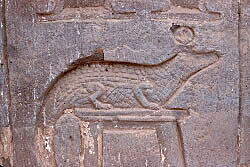 |
| Without question the time Anne and I spent in Luxor and the surrounding area was a highlight of this magnificent trip. There we had the opportunity to view some of the world's most ancient and valuable treasures, the chance to walk amongst the ruins and, more importantly, the chance to reach out and touch these beautiful treasures. I can't tell you how much more meaningful it is to experience such things first hand. You just can't compare it to reading about them in a book or watching television documentary. Actually walking amongst the ruins puts it all into proper perspective. | |||||||||||||
| From Luxor we would board our tour bus for the journey upriver to Aswan, home of the magnificent dam built by the Egyptians and Russians just a few years earlier. On this journey we would get a good perspective of what modern-day life is like in Egypt. The Nile, without question, brings life to Egypt. Where the Nile is there are lush, green pastures, and where it is not there is only hot, dry sand. Life throughout Egypt is centered around this life-giving river and it is beautiful. Modern day Egyptians are as dependent today on beast of burden like the camel and donkey to do everyday chores. On the way to Aswan we passed a large herd of camel being readied for auction (right). |
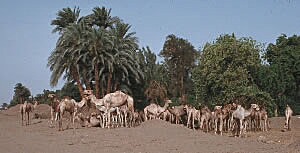 |
||||||||||||
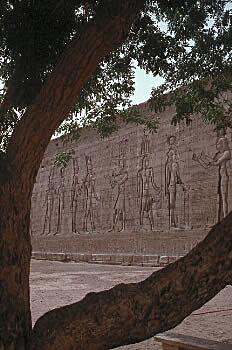 Temple wall at Edfu |
On our drive to Aswan we would stop at several ancient ruins along the way. The first would be the great temple at Edfu. Edfu is a small town along the Nile that would probably have been forgotten long ago had it not been the home of this temple, perhaps the best preserved in all of Egypt. The temple at Edfu ranks second behind Karnak simply because of it's immense size, approximately 230 by 400 feet with a pylon measuring over 100 feet high. The temple is dedicated to the god Horus and at its entrance stand two large black granite statues of Horus who is depicted as a falcon. The elaborate carvings on the walls of the temple are beautiful and as if carved just yesterday. Inside the temple was a small sanctuary where our tour guide related that the priests of the day offered the best parts of the animals to the gods. He then asked us to guess what the best part of the animal was that was offered to the gods. His answer was a bit surprising, but absolutely correct. He explained that the animals were burned on the altar and what was offered to the gods was the smell of the burning flesh. Think about it. Even the worst cut of meat can smell absolutely delicious while cooking it. Enjoy a few pictures of Edfu. |
||||||||||||
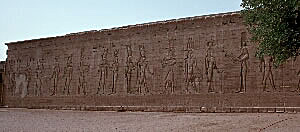 Side wall of the Edfu Temple |
The temple at Edfu is magnificent, but it lacks the many elaborate statues that are present at Karnak. But the temple wall carvings are beautiful. This was one of my favorite temples, probably because it was dedicated to one of my favorite Egyptian gods, Horus. |
||||||||||||
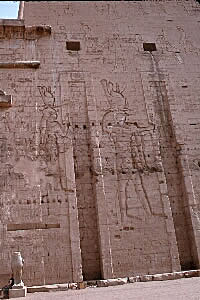 Entrance Pylon at Edfu |
|||||||||||||
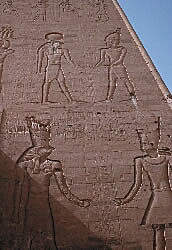 Carvings on Pylon |
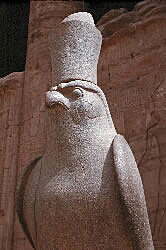 Close-up of Horus |
||||||||||||
|
Enjoy these pictures of Kom Ombo. |
|||||||||||||
 Ruins of Kom Ombo Temple |
 Sabek, the crocodile god |
The temple actually contained hundreds of mummified crocodiles hidden away in different chambers. |
|||||||||||
 Inside the Kom Ombo Temple |
 Temple wall engravings |
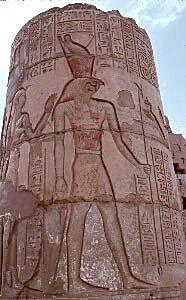 A column dedicated to Horus |
|||||||||||
| Continue to the next page and enjoy pictures of Aswan, Egypt. | |||||||||||||

